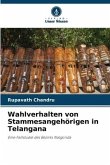The volume focuses upon the Tribal system in India. Studies concerning Tribals - their origin, habitat, mode of living, cultural pattern, their living conditions, problems and their pattern of political perceptions including political participation have been significantly attracting scholars from the disciplines. The tribals in India differ from one another in racial traits, language, social organisations, cultural pattern etc. Their language covers all the types such as Dravidian, Tibeto-Chinese and native distinct dialects. The tribal's people are generally found to be bilingual tribal as well as their voting behaviour, party identification, alienation preference to parties, role of interest groups and associations, etc, have been highlighted. This insightful study on the state of tribal in India. Overall, the book's presentation is admirable it is also affordably priced. A good pick for researchers, teachers and students of social science, especially involved with research ontribal voting behavior.
Bitte wählen Sie Ihr Anliegen aus.
Rechnungen
Retourenschein anfordern
Bestellstatus
Storno








